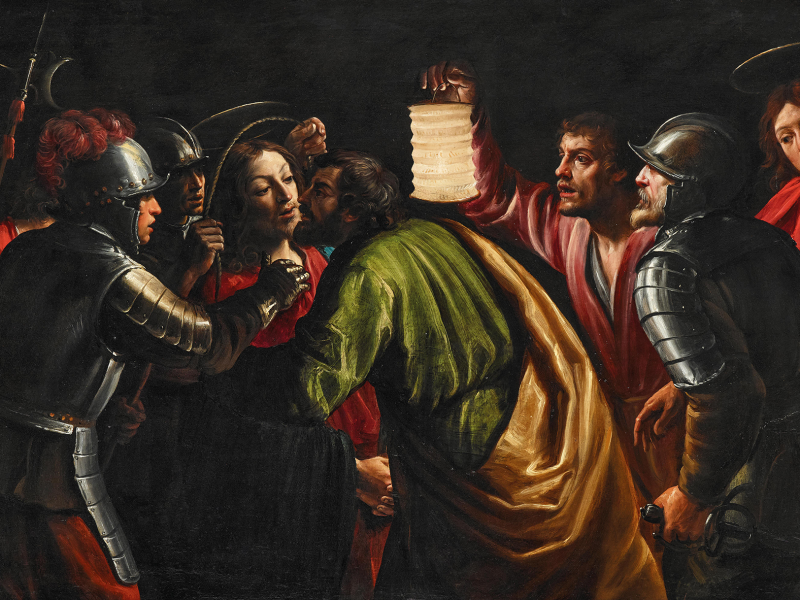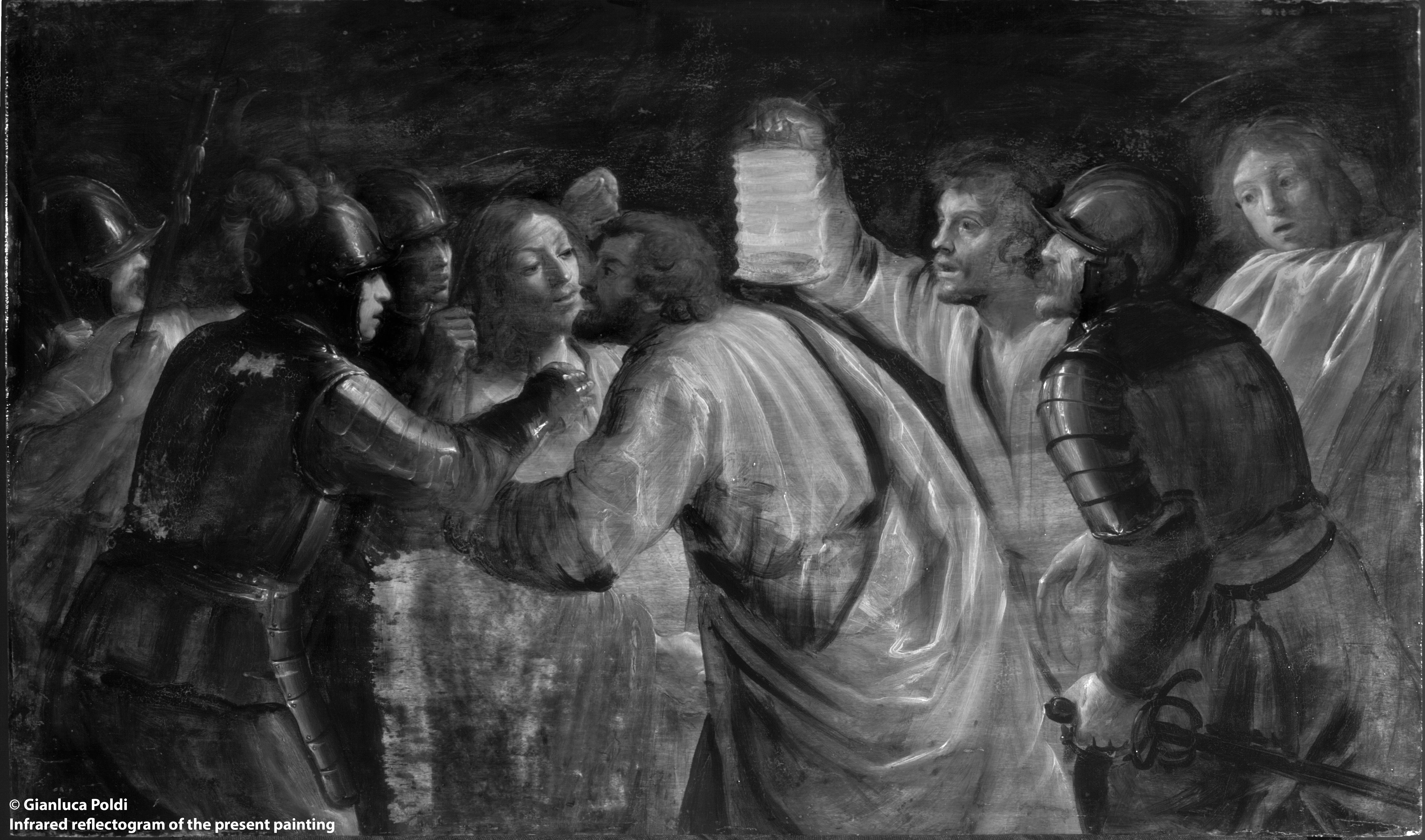
With “The Taking of Christ” by Giuseppe Vermiglio, a virtuoso painting by the best Piedmontese artist of its time will be auctioned: on 10 November 2020 at Dorotheum.
A virtuoso reinterpretation
The present painting represents the episode recorded in the Gospels when Judas, having betrayed Christ, approaches to kiss him, thereby revealing his identity to the soldiers who will arrest him. It is a subject that was often represented by painters in Rome during the first decades of the seventeenth century, under the influence of the innovations of Caravaggio.
The artist of the present Taking of Christ, Giuseppe Vermiglio, spent many years in the Rome, from the beginning of the seventeenth century until the start of the third decade: here he elaborated a pictorial language steeped in the style of realism which characterised the period.
Even after his return to Northern Italy, where he was prevalently active in Piedmont and Lombardy, Vermiglio frequently reiterated subjects undertaken by Caravaggio, as is the case with the present painting. The artist surely knew, perhaps even directly, the Taking of Christ by Caravaggio currently in the National Gallery of Ireland, Dublin but at the time still in Rome, conserved in the house of the Mattei family who commissioned it from Caravaggio. In the present painting on panel, the references to this work by Caravaggio are especially evident in the pose of Christ, seen at an angle with his arms down, his hands clasped together, and in the positioning of the man on the right holding a lantern which is of the exact same shape in both paintings. The features of this figure in the Dublin painting have been identified as a self-portrait of the artist, and it is plausible that in the present painting they are also a portrait of Caravaggio, intended as a tribute to the Lombard master.
There are also close analogies between the present painting and the Taking of Christ by Bartolomeo Manfredi which was rediscovered in 2004 and is currently conserved in the National Gallery of Western Art, Tokyo. The bright colours of the robes of the protagonists seem to point to a knowledge of Spanish painting, and particularly of El Greco, while the fluid, painterly application of the impasto is close to the experiments conducted at the time by the Roman painter, Orazio Borgianni (1574–1616).

Technical examinations have revealed the artistic virtuosity and the impressive freedom with which the work has been executed, particularly in the depiction of clothes. All these details indicate this painting to be a reinvention of a composition that derived from Caravaggio.
Little is known about Vermiglio’s biography. He was probably born in Piedmont. During his time in Rome, where he also worked as an art dealer, he was involved in violent disputes among artists. Having returned to Northern Italy around 1620, he was active as an artist in Novara, Mantua, and Milan. He is considered to be the most significant Piedmontese artist of his age.
CONTACT
+43-1-515 60-403














